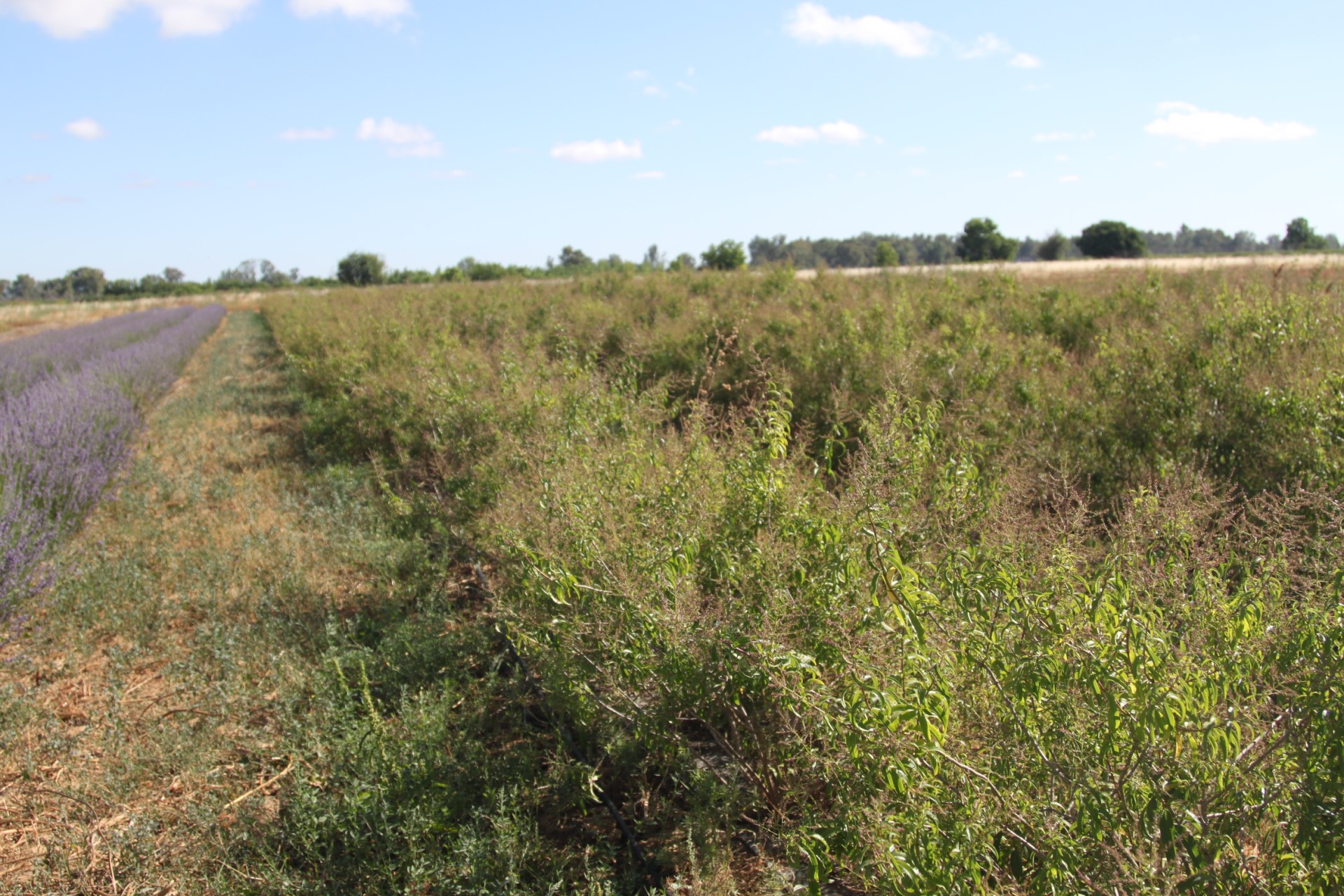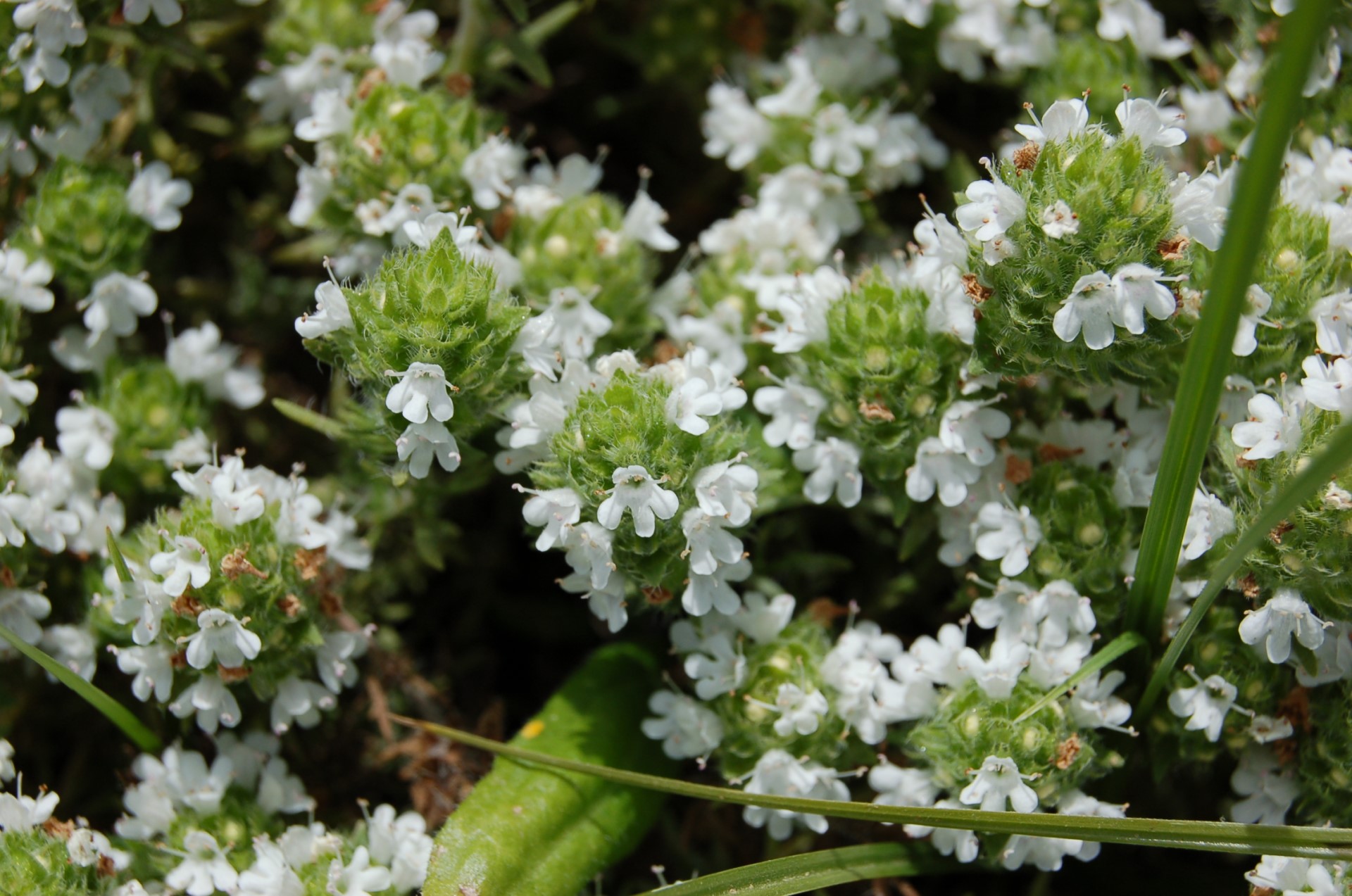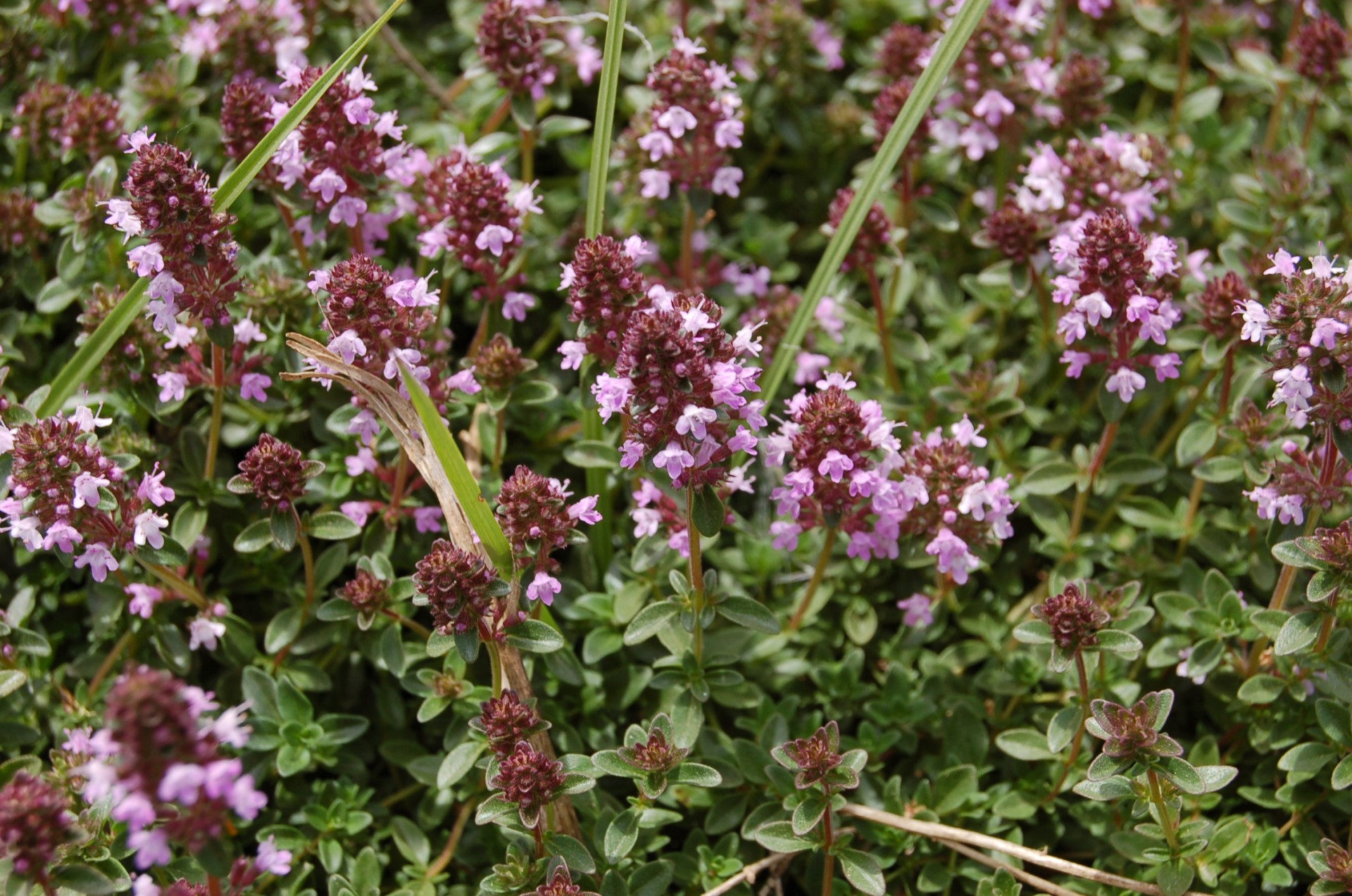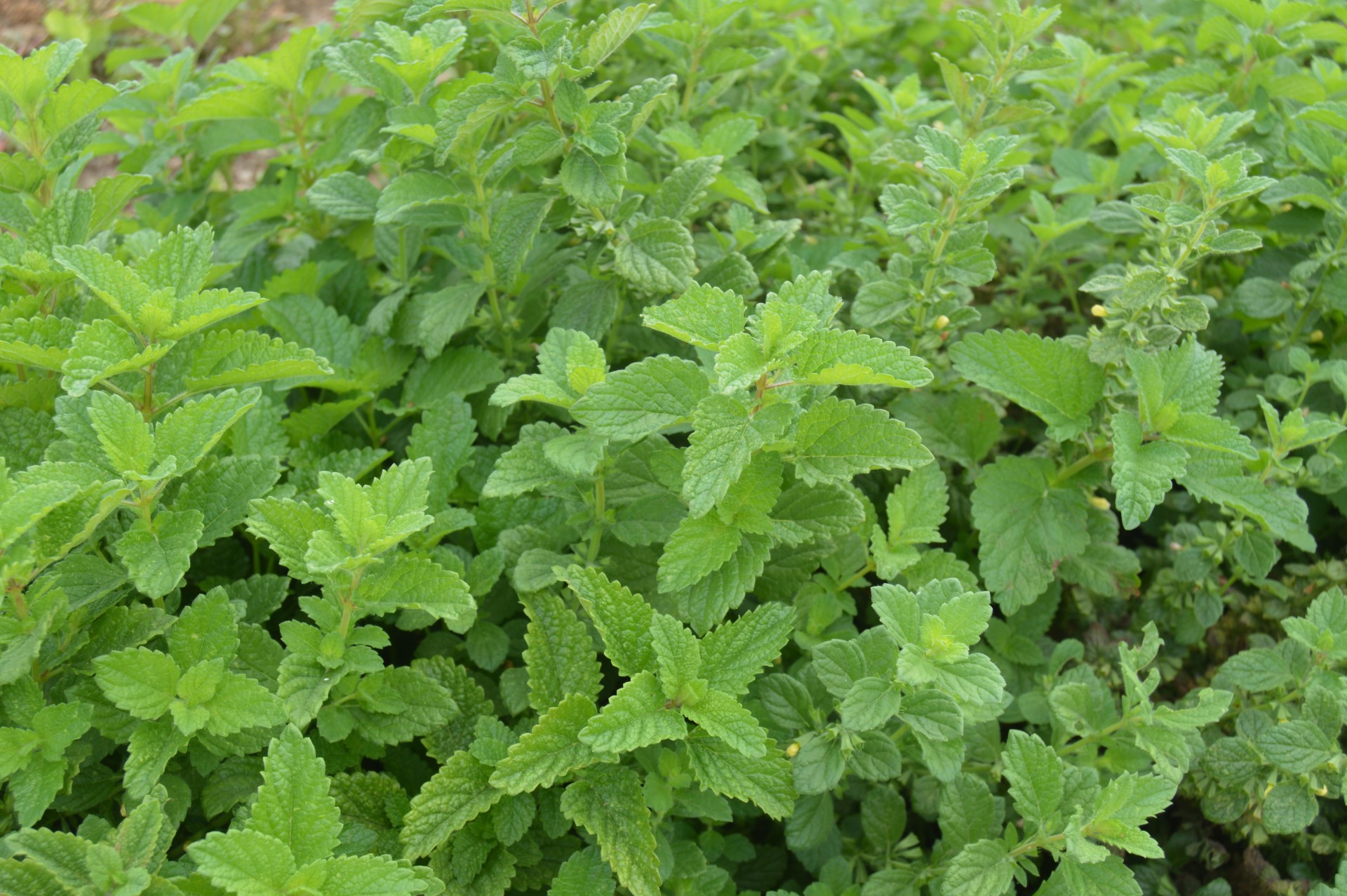
Medicinal, aromatic and condimentary plants
 General information
General information
In Extremadura, medicinal and aromatic plants are scarcely cultivated and their production in this region mainly comes from wild harvests. These harvests result in limited productions, which destroy the space where these species are present, and moreover their poor quality is not enough for their commercialisation. These factors together with the strategic importance that these species have for the agri-food, perfume and, in particular, pharmaceutical industry, make them highly interesting, and thus it is necessary to understand their diversity, to preserve their germplasm, and to promote strategies for their cultivation and future exploitation in order to achieve a return on the natural wealth of Extremadura.
This line of action includes all the activities focused on the exploitation of medicinal and aromatic plants and their preservation and improvement. The institution has been working in this line for more than 15 years, which has favoured woody crops of native species and, to a lower extent, the adaptation of foreign species of great interest or highly demanded in the market and the cosmetics, pharmaceutical or agri-food industries.
It is necessary to highlight the preservation of germplasm of more than 60 native species from the southwestern Iberian Peninsula, as well as the selection and improvement of more than five species of Extremadura’s medicinal and aromatic plants, together with the development of, at least, 10 additional species of interest for Extremadura’s agricultural area.
 Lines of Research
Lines of Research
Preservation of diversity of medicinal and aromatic plants from Extremadura.
Cultivation of Extremadura’s species for aromatic, medicinal and seasoning purposes.
Adaptation and readjustment of foreign crops of medicinal and aromatic plants of interest for Extremadura.
Dissemination of the cultivation, preservation and diversification of medicinal, aromatic and seasoning plants from Extremadura.
 Medicinal, Aromatic, and Seasoning (MAP) Crop Tests
Medicinal, Aromatic, and Seasoning (MAP) Crop Tests
Within the basic needs to adapt, develop and diversify the MAP crops in Extremadura, crop fields have been developed during the last 10 years for the experimentation, selection and testing of native and foreign MAP species of interest in Extremadura.
These lines include native species such as thyme, rosemary, oregano and lavender, which are herbs of great interest due to their current demand and with productive capacity in Extremadura such as camomile, basil, coriander or mint; and other foreign plants of interest due to their constant demand in the market and the conditions offered by the Extremadura agricultural area, such as lavandin, lavender, lemon thyme, rosa centifolia, lemon verbena, lemongrass, salvia, etc.
Under the current circumstances, it is necessary to seek alternatives that can adapt to the various situations derived from the loss of profitability of traditional agricultural crops and the effect of climate change, which might become an alternative to the current production systems in the near future and generate income in order to guarantee the sustainability of the agricultural environment and promote its capacity for resilience.
The lines of research conducted by the Agricultural Biodiversity area include the cultivation of species of native medicinal and aromatic plants (MAP), as well as the adaptation of foreign species of great interest or highly demanded in the market and the cosmetics, pharmaceutical or agri-food industries.
Their main goal is to provide information on the adaptation of their cultivation in Extremadura, and to provide tools for the agronomic assessment (sowing rate, planting distances, fertilisation needs, irrigation, pruning, weed control, phytosanitary treatments). On the other hand, they allow us to obtain information on expected yields (greenery, dry materials and essential oil yield) under homogenous growing conditions. Likewise, we select those varieties or cultivars having certain differential conditions that generate higher-quality yields, performance or adaptation to future climate scenarios.
Nowadays, more than 15 different species of medicinal and aromatic plants are being organically grown on the test plots located at Finca La Orden of the Centre for Scientific and Technological Research of Extremadura (CICYTEX). Information on each one of them is provided below, divided into two main groups: woody plants (shrubs and trees) and herbaceous or semi-woody plants.
 Tree species
Tree species
MAP tree species of interest for the agricultural areas of Extremadura are mainly characterised by their size, which is not usually very high for their handling, and their water needs, which facilitates their cultivation on irrigated plots of land for their exploitation. Among the tree species currently grown at Finca La Orden, we could highlight:
Laurus nobilis L. (Laurel) (LAURACEAE)
Evergreen dioecious tree with a height of up to (6)8-9 m. Erect, glabrous stems. Evergreen lanceolate, 17-cm long, and alternate leaves. Its flowers are grouped in umbel-shaped glomeruli in the axillary buds of leaves, with flower coloured from green to white. Berry-like black fruits, up to 17 mm long maximum, and rich in oil.
Laurel grows across the Mediterranean area, to which this tree is native. Nowadays, it is usually found in crops and quite rarely in the wild, more frequently naturalised.
Its leaves are used as seasoning, although its fruits have been traditionally harvested for oil extraction, which is combined with olive oil and sodium hydroxide in order to manufacture Aleppo soap, with many epidermal and antiseptic properties.
 Shrub species
Shrub species
MAP shrub species are evergreen plants, which guarantee their cultivation for several years (10-12 years) and require an initial development period from 1 to 2 years prior to their harvest and exploitation. Among the woody species that are currently grown at Finca La Orden, we could highlight:
Aloysia citriodora Paláu (lemon verbena, lemon beebrush) (VERBENACEAE)
Evergreen shrub with a maximum height of 3-6 m. Erect, glabrous stems. Deciduous, lanceolate and 11-cm long leaves, generally grouped in whorls of 3-4 leaves. Sessile flowers, coloured from white to purple, and grouped in whorls of three. Its essential oil is produced in glands, mainly on leaves and flowers.
Lemon beebrush is an endemic species from South America and is widely grown all over the world for ornamental purposes and in order to obtain dry leaves for herbal teas.
Its essential oil is rich in citral, geraniol and limonene, among other compounds, which have enabled its traditional use as a medicinal species to treat upset stomachs, spasms and as a relaxant.
Lavandula stoechas L. (French Lavender) (LAMIACEAE)
Evergreen plant with erect stems up to 100 cm high. Linear to lanceolate and tomentose leaves up to 4 cm long. Its purple flowers are grouped in terminal inflorescences with a very short stalk (up to twice the length of inflorescence). Its essential oil is produced in glands distributed all over the plant, which allows the use of the entire plant.
This species has two subspecies or varieties “stoechas” and “luisieri”, native to the Iberian Peninsula, with some differences in the composition of their essential oils.
Lavandula angustifolia Mill. (lavandin, lavender) (LAMIACEAE)
Evergreen plant with erect stems up to 100-110 cm high. Lanceolate and tomentose leaves up to 6 cm long. Its purple flowers are grouped in terminal spiciform inflorescences. Its essential oil is produced in glands, which are mainly located in its flowers.
This species, endemic to the Mediterranean area, has been widely grown for ornamental purposes and in order to obtain its essential oil used in the perfume, pharmaceutical and cosmetics industries. Its medicinal use is focused on its bactericidal properties, dermatological treatments and oral hygiene.
Origanum vulgare L. (orégano) (LAMIACEAE)
Evergreen plant with erect square stems up to 70-80 cm, with opposed oval leaves up to 3 cm wide, whose size decreases with the length of stems. Flowers, coloured from white to pink, are grouped in a quite ramified terminal inflorescence.
Its essential oil is produced in glands distributed all over the plant, which allows the use of the entire plant. It is characterised by its high content of carvacrol, thymol, ¿-terpinene and p-cymene. However, its composition is highly variable according to the variety or subspecies grown (or harvested). The tests carried out by CICYTEX assess the production, yield and quality of the essential oil of the native subspecies “macrostachyum”, “virens” and “vulgare”.
Among its main uses, we could highlight food seasoning and preservation; it is also used for medicinal purposes, as an antiseptic and antispasmodic.
Thymus mastichina (L.) L. (winter savoury, marjoram) (LAMIACEAE)
Evergreen plant with erect and pubescent stems, up to 95-100 cm high. Lanceolate to elliptical leaves up to 15 mm long. Its white flowers are grouped in apical globular inflorescences. Its essential oil is produced in glands located on leaves and flowers.
This is a species traditionally used as a food preservative and seasoning. Moreover, its essential oil is rich in 1-8 cineole, linalool and limonene, which enables its medicinal use for anti-inflammatory, antiasthmatic and antimicrobial treatments.
Thymus zygis Loefl. ex L. (olive thyme, sauce thyme) (LAMIACEAE)
Evergreen plant with erect pubescent stems, up to 25-30 cm high. Linear-lanceolate leaves, up to 7-8 mm long. Petiolate white or purple flowers in terminal spiciform inflorescences. Its essential oil is produced in glands located on leaves and flowers. This species has three subspecies or varieties: “zygis”, “gracilis” and “sylvestris”, which may have some differences in the composition of their essential oil, rich in thymol, p-cimene and ¿-terpinene.
This is a species traditionally used as a food preservative and seasoning. Moreover, this medicinal plant is used as a painkiller and a digestant.
Thymus × citriodorus (Pers.) Schreb (lemon thyme, citrus thyme) (LAMIACEAE)
Evergreen plant with upward branching stems up to 30 cm high. Lanceolate leaves, from oval to elliptical, up to 14 mm long. Apical spiciform inflorescence with flowers, from pink to purple. Its essential oil is produced in glands located on leaves and flowers.
The lemon thyme is a sterile hybrid resulting from the cross between Thymus pulegioides L. and Thymus vulgaris L., and it has been widely used as an ornamental, seasoning and medicinal plant.
 Herbaceous or semi-woody plants
Herbaceous or semi-woody plants
This group includes herbaceous or semi-woody species that are mainly evergreen (except for Chamomilla recutita (L.) Rauschert). In this group of species, the development period is reduced, which allows to exploit the plant during the first year following their sowing or planting. The growing cycle is usually shorter and requires the renovation of plants with a frequency lower than that for woody species.
Chamomilla recutita (L.) Rauschert (camomile, German camomile, scented mayweed) (ASTERACEAE)
This native lively herb belonging to the asteraceae family is characterised by its ramified erected stems, up to 50 cm high, green-greyish leaves, divided in short and narrow lobes.
Since ancient times, it has been used for medicinal purposes (treatment of internal infections, fever, gastrointestinal problems, as a painkiller and digestant, and for skin and eye inflammatory problems) and culinary purposes.
Its floral capitula are harvested when inflorescences start to open, from April to May.
Cymbopogon citratus (hort. ex DC.) Stapf. (lemon herb, lemongrass). (POACEAE)
This is a lively evergreen grass native to South Asia (India, Ceylon, Malaysia). In its chemical composition, we could highlight neral (25-35%) and genarial (25-47%), and –to a lower extent–geraniol (1.5-8%).
It has medicinal properties, such as antispasmodic, carminative, febrifuge, analgesic, antidepressant, antiseptic, astringent, antibacterial, fungicide, sedative or tonic properties.
Its dry leaves are used for herbal teas and its stems in Asian dishes. Its essential oil is valued by the perfume industry, cosmetics industry and pharmaceutical sector (vitamin A), and as flavouring in the food industry.
Melissa officinalis L. (lemon balm) (LAMIACEAE)
Native herb belonging to the lamiaceae family with erected stems up to 20-100 cm high, slightly lignified at their base; simple, opposed leaves with short petiole, from largely oval to ovoid, and axillary inflorescences of 4-12 white or pink flowers. It is grown for its leaves, flowers and essential oil.
It has volatile compounds (citral, linalool and citronella), polyphenols, tannins, flavonoids, etc.
It has been traditionally used as an antispasmodic, skin anti-irritant, antibacterial, antiemetic, intestinal anti-inflammatory, antimicrobial, antioxidant, antiviral, aromatic, antitussive, carminative, etc. Its leaves and flowers are used to facilitate digestion, to ease abdominal pain caused by digestive issues, and to reduce nervousness in adults and children, in particular, in cases of slight sleep issues. Leaves are also used for cooking and flavouring purposes (mixtures) and in the alcoholic beverages industry. Its essential oils have antibacterial and antiviral properties and are also sedative.
Its numerous uses turn this herb into a highly valued one for many purposes in the food, pharmaceutical and perfume industries.
Mentha spicata L. (peppermint, spearmint) (LAMIACEAE)
This is an evergreen aromatic herb commonly known as peppermint. It has opposed, from lanceolate to lanceolate-oval, serrated, glabrous or densely pilose leaves; its flowers are lilac, pink or white and arranged in terminal spikes.
As regards its chemical composition, we could highlight: L-carvone, limonene, menthone, menthol, pulegone, cineole, linalool, etc.
This species is widely used in traditional medicine due to its properties: analgesic, anti-cold, eupeptic, odonatological, sedative, digestant, laxative, anti-obstructive, emetic, dermatological, anthelmintic, glucose-lowering action, etc.
From the commercial point of view, it has been used as food seasoning and in order to flavour drinks and infusions; it is also used in the cosmetics industry and for the preparation of mouthwashes.
Salvia sclarea L. (clary, clary sage) (LAMIACEAE)
Evergreen herb with woody-based upward stems and inflorescences grouped in spikes of dense whorls at the end of fertile branches with flowers coloured from pink to reddish.
Its essential oil contains: (-)-sclareol, (-)-linalool, (-)-linalyl, germacrene and caryophyllene. It has been traditionally used as an antiseptic, antiepileptic, digestant, emmenagogue, insecticide, neurotonic, psychotropic and relaxant. At the industrial level, its essential oil is used in the perfume industry as a fixative and in the flavouring of beverages. In the cosmetics industry, it is used as an astringent, antiseborrheic and a painkiller. Its leaves are also used raw for salads, omelettes, etc.
Salvia verbenaca L. (arnica, balm, gentian sage, sage, wild clary, wild sage) (LAMIACEAE)
Evergreen herb native to the Mediterranean area. Basal leaves arranged in a rosette and stem and opposed leaves, with inflorescence in spike of whorls with flowers coloured from blueish to purplish. Its chemical composition is rich in diterpenes, such as verbenacine and salvinine.
It has been traditionally used in traditional medicine due to its healing effect, as emmenagogue, carminative, anti-inflammatory or digestant. It has been used as a vegetable for food, and as a dye (yellow).
Valeriana officinalis L. (Valerian, allheal, catnip) (VALERIANACEAE)
This is an evergreen erect, usually stoloniferous and pubescent plant.
The chemical composition of its essential oil mainly contains terpene substances: sesquiterpenes (cyclopentane carboxylic acid) and iridoids (lipophilic esters of triols derived from iridane).
It has been traditionally used as a sedative, muscle relaxant, blood pressure reducer; it is used to control anxiety and nervous system issues, and as an anti-inflammatory.
It is mainly used due to its roots and, to a lesser extent, due to its leaves, stems and, in particular, its inflorescences. Its main properties are concentrated in extracts and the essential oil obtained from its roots.









